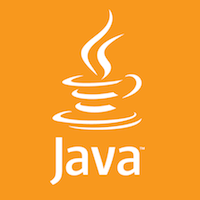What are the 3 types of Java, Explain?
Java is a high-level programming language that is widely used for developing desktop, web, and mobile applications. It is known for its robustness, security, and platform independence. Java is a general-purpose programming language that supports multiple programming paradigms, including object-oriented, imperative, and functional programming. Java has three distinct editions: Java Standard Edition (Java SE), Java Enterprise Edition (Java EE), and Java Micro Edition (Java ME).
Java Standard Edition (Java SE)
Java SE is the most basic and widely used edition of Java. It includes all the core Java APIs and libraries necessary for developing desktop applications and command-line utilities. Java SE also includes the Java Virtual Machine (JVM) that provides the runtime environment for Java applications. The Java SE platform is designed to be portable across different operating systems, making it possible to write once and run anywhere (WORA).
Java SE includes many essential features, such as object-oriented programming, exception handling, multithreading, and networking. It also includes several useful libraries, such as the Java Standard Library, which provides a rich set of data structures and algorithms, the Java Database Connectivity (JDBC) API for connecting to databases, and the JavaFX library for creating graphical user interfaces (GUIs).
Java Enterprise Edition (Java EE)
Java EE is an extension of Java SE that is designed for building large-scale enterprise applications. Java EE includes all the features of Java SE, as well as many additional APIs and libraries for enterprise-specific tasks such as web services, distributed computing, and transaction management. Java EE is built on top of the Java SE platform and provides a set of standard APIs and services for building enterprise applications.
Java EE includes many useful APIs, such as the Java Servlet API for building web applications, the JavaServer Pages (JSP) API for creating dynamic web pages, the Enterprise JavaBeans (EJB) API for building distributed enterprise applications, and the Java Persistence API (JPA) for managing relational databases. Java EE also includes several application servers, such as Apache Tomcat and GlassFish, which provide a complete runtime environment for Java EE applications.
Java Micro Edition (Java ME)
Java ME is a subset of Java SE that is designed for building applications on small, resource-constrained devices such as mobile phones and embedded systems. Java ME includes a stripped-down version of the Java SE platform, along with additional APIs and libraries for mobile-specific tasks such as wireless connectivity, location-based services, and multimedia playback.
Java ME includes several useful APIs, such as the Mobile Information Device Profile (MIDP) API for building mobile applications, the Connected Limited Device Configuration (CLDC) API for running Java on resource-constrained devices, and the K Virtual Machine (KVM) for running Java on embedded systems.
Conclusion
In conclusion, Java is a powerful and versatile programming language with three distinct editions that cater to different application development needs. Java SE is the most basic and widely used edition, Java EE is designed for building large-scale enterprise applications, and Java ME is tailored for building applications on small, resource-constrained devices. Each edition includes a set of APIs and libraries that make it easier to develop applications for a particular use case. Java’s popularity and robustness make it a popular choice for developing a wide range of applications, from desktop utilities to enterprise-scale systems.


